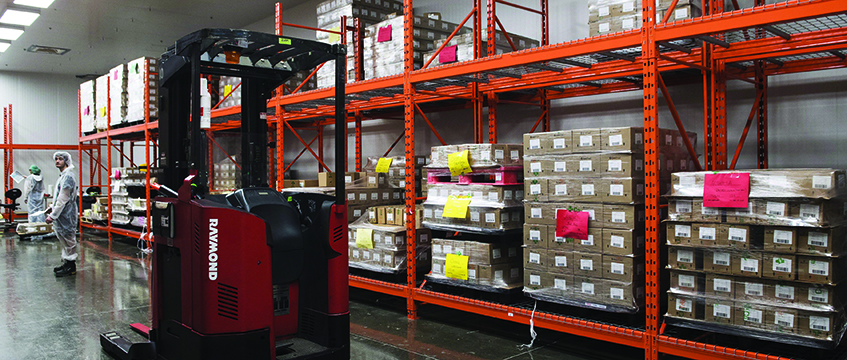Canada hit the headlines last year when it became the first G7 country to legalise cannabis. The legislation was set to offer ‘unprecedented opportunities’ for the real estate sector, but challenges over everything from packaging to regulations at a local level have fuelled concerns that the trailblazing move could go up in smoke.
The world was watching on 17 October last year when the first legal recreational cannabis in Canada traded hands. It was midnight in Newfoundland and, as the first G7 nation to legalise the drug, Canada became an international guinea pig: an experiment the world could study. How does a developed nation go about regulating the market? What are the benefits? What impact will it have on the wider economy – including real estate?
Canada could finally answer those questions. But, several months on from legalisation, the answers are mostly confusing and complicated – especially given the fact that cannabis landed in Canada with more of a whimper than a bang.
In the month leading up to legalisation, JLL published a report describing it as an “unprecedented” opportunity, “even bigger than the end of prohibition of alcohol”. It pointed to Denver, Colorado, where cannabis accounts for 3% of the area’s total warehouse market. Industrial rents across Canada were likely to go up as the cannabis market scooped up empty space, which was already at record lows in major cities.
In retail, those in the cannabis market were likely to have to pay a 10%-25% premium on rents to counter the uncertainty of being in an emerging market, which would then drive up rents for other retailers. This is, after all, a potential $10bn industry looking to shake things up.
Teething troubles
The problem for Canada has been that regulation is not easy. While cannabis is legal on a federal level, specifics vary from province to province. In some places, such as Alberta, the minimum age for buying cannabis is 18, while in others, like Ontario, it is 19. Some provinces allow online sales; others do not. Some require government-run shops, while in others the private sector is allowed to get involved.
On top of this, regulation is constantly evolving. Ontario originally required government-run stores but soon allowed them to go private, implementing a lottery system where people applied to win one of 25 licences.
“In terms of how regulations have developed on cannabis, that puts a little bit of a wet blanket on the potential for what the market could be,” says Afzal Hasan, president and general counsel at Origin House, a Canadian investor and operator in the cannabis market. Although at the time of writing it operates exclusively in California, a deal to buy vaping business 180 Smoke will give the company exposure to the Canadian market in the coming months.
Hasan says that he understands why Canada has been cautious about its regulation: “If you want to be the first G7 country to legalise cannabis, you want to make sure you don’t fall flat on your face.” However, he cautions that an ever-evolving regulatory environment can have serious consequences.
In Colorado, for example, regulations around packaging have changed several times. In October last year, the industry publication Packaging World reported that businesses in the state had to drop some of their products because they could not afford the cost of new ‘child-resistant’ packaging for everything they sold.
“As a manufacturer, having to do a recall and repackage all your stuff can be a tremendous expense,” Hasan says. “That could literally sink a company, and it did for many, many companies.” The danger is that, as a still-young market, Canada is susceptible to repeating what happened in Colorado.
The other problem, Hasan says, is that regulation is not yet in line with what customers want. Hasan says that almost half of the cannabis products sold in the US are non-cannabis flower products, such as edibles, vaporisers and lotions. That is what the market is gravitating towards, but in Canada most of those products are still illegal.
Edibles are expected to be legalised later this year, although cannabis-infused alcoholic drinks will remain illegal.
A blunt problem
The underlying problem in Canada’s market is a chronic undersupply of product, which has hampered the number of retail licences issued and failed to give users a practical alternative to the black market.
Cultivators are still figuring out the market, particularly around the most efficient ways of growing cannabis and the amount they are able to grow in the spaces they have. Crucially, large-scale facilities that the country needs to supply enough cannabis have never been used before.
That learning curve is creating supply chain issues where stores are likely to stay closed throughout the week or open with bare shelves. Would-be customers cannot buy the products they want – or, in the case of the recent Canada Post strike, are left waiting if they order online – leading to little reason to switch over to legal cannabis. All of that has stifled the potential for rental growth in the retail market.
“Initially, all the landlords thought there would be a huge windfall, but I think it’s changed a little bit – now there’s this shortage of supply and things are normalising,” says Brodie Henrichsen, senior vice president on JLL’s retail team in Vancouver. “The massive shortage has been changing everything in terms of getting the actual stores open and licensed. The government is saying, ‘Maybe we issued too many licences.’”
The number of stores varies considerably by province. In Alberta there are around 75 stores, while Ontario, Canada’s most populous province, has just 25 licences. In January, 81% of Ontario’s municipalities voted to allow recreational marijuana stores within their boundaries, which means that nearly a fifth declined, dealing a significant blow to potential retailers in those areas.
On the industrial side, around 10m sq ft of space is in use for cultivation, which is significant – JLL had predicted that some 8m sq ft would be needed in 2019 and 2020 – but not yet enough to move the needle on rents.
“In Ontario, we’ve seen more industrial space being used outside of the major cities,” says Thomas Forr, director of research at JLL in Toronto. “It doesn’t impact directly the Toronto industrial market, for example, which is an 800m sq ft industrial market.”
In total, Canada had around 1.6bn sq ft of industrial space at the end of 2017. Even if the broken supply chain is fixed, cannabis will make up only a small fraction of total take-up.

High expectations
Despite its bumpy start, Canada’s legislation is giving consumers, producers and investors optimism for the future potential.
Hasan, for example, points to Ontario’s public-to-private shift in retail, saying: “It reflects an evolution, and I think they will ultimately get there. The question is how many mistakes do you make along the way? And will those mistakes hamper the growth of the market?”
Henrichsen expects supply shortages to give way to oversupply within the next two to three years as cultivators get to grips with the market and start running large-scale production. Chuck Rifici, chief executive of cannabis firm Auxly, suggested a similar timeframe to Canada’s CBC News in January. The legalisation of edibles, he said, would push the end of cannabis undersupply from 18 months to a few years.
Once there is enough supply in the market, Canada will start to issue more licences. In Alberta, JLL estimates that there are likely to be 300 to 400 stores selling cannabis within a decade, while across Canada it expects there to be around half as many cannabis stores as liquor stores (just shy of 3,700 at the end of 2016, according to government statistics).
The world watches
Countries around the world have an opportunity to learn from what has gone right and wrong in Canada’s regulatory approach, and harness the potential of a new industry. But making any final judgements would be premature.
Of course, some in the industry are already thinking ahead. In the UK, Tom Crosthwaite, leisure property consultant at CDG Leisure, says: “If marijuana becomes legalised – depending on how it becomes regulated – operators with an offering focused around this may have the potential to fill some empty space on the high street.”
He adds that legalised marijuana could boost experiential leisure – as is happening in Canada with cannabis-infused yoga classes – while delivery services and fast food operators are likely to benefit indirectly.
Some other lessons may not translate directly. Parts of Canada, for example, have to rely on large swathes of greenhouses that are heated in the winter and cooled in the summer to grow cannabis, which would not be necessary in warmer climates. Legislation could also evolve if regulations are relaxed globally, particularly in terms of cross-border movement of cannabis, which is illegal in Canada regardless of whether or not the other country has legalised it.
Given the forecast oversupply of cannabis, Canada could use the opportunity to start exporting its product. However, as an early mover in the industry, it has a long list of problems to iron out before it can start thinking about rolling its product out to the wider world. And the wider world – largely opposed to legalising marijuana – still needs convincing.
The next two years could prove crucial to the future of cannabis legislation, and so the world keeps watching as Canada experiments with drugs.
Cannabis goes global
The road to widespread marijuana legalisation is a long one, and one that we are only at the beginning of. Only four countries so far have legalised recreational cannabis use:
- Uruguay: Legalised in 2013. Legal but prohibited for foreigner users.
- Canada: Legalised in 2018. Legal at the federal level but regulations vary by province.
- Georgia: Legalised in 2018. Consumption and possession are legal but sale is not.
- South Africa: Legalised in 2018. Possession and cultivation are legal but sale is not.
Several other countries have either decriminalised recreational use or legalised it in certain places. In the United States, cannabis remains illegal at the federal level but has been legalised in 10 states, the District of Columbia and the northern Mariana Islands.
Cannabis is illegal in the Netherlands except at licensed coffee shops, while possession is decriminalised on up to 5g.
Beyond this, medical use of cannabis is legal in 33 countries. This includes the UK, where it is allowed to be used for a range of conditions, including severe epilepsy, vomiting or nausea caused by chemotherapy and multiple sclerosis.
To send feedback, e-mail karl.tomusk@egi.co.uk or tweet @karltomusk or @estatesgazette











